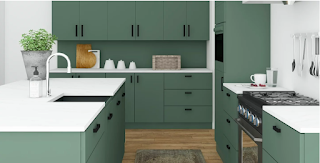How To Become An Interior Designer Without A Degree?
Interior designers have the ability to enhance the beauty of a space and create an ambient and functional environment so that the area becomes useful and purposeful. They conceptualize, manage, coordinate, research, and develop projects to create amazing living spaces. They need to learn all about design theory and the design process to offer their design services optimally.
Is it Necessary to Have an Interior Design Degree to Become an Interior Designer?
In the interior design industry, one doesn’t need to necessarily work with a firm – with the help of social media and digital presence, designers can even operate individually and grow their interior design practice.
So, to answer the question, yes, indeed, it is possible to become an interior designer without getting a degree in design. It is more about having the required skills and knowledge to land projects than simply having a degree.
In fact, many designers that have a degree but lack the knowledge and skills to gather enough experience are unable to work on projects and build a portfolio. While a degree is beneficial, it isn’t mandatory, especially if you are looking to get hired by a professional interior design company.
8 Steps to Becoming an Interior Designer without a Degree:
1. Be Observant & Open to Learning
Young students don’t need to get into the interior design field fresh out of college – an individual can take up interior design at any age. One of the biggest traits that one must harbor is a thirst for knowledge and an eye for detail. Since the interior design industry is constantly evolving, you need to be observant and be open to learning new things.
2. Take up Short Courses
One of the most significant aspects of the world going digital is the availability of content everywhere. If you’re looking to become an interior designer or want to upskill yourself, instead of taking up a formal course, you can take up short courses such as diploma courses.
3. Create a Portfolio
A crucial part of interior design is visualization, and what better way to show clients your work than through a portfolio? To establish a firm footing as an interior designer, take steps to build a personal interior design portfolio and branding.
4. Seek Internships or Formal Training
Another step to becoming a successful interior designer should involve finding experience. In the interior design industry, practice makes perfect, so it’s crucial for designers without any experience or background to build a portfolio once they finish their diploma or certification program.
Click here to read more .





Comments
Post a Comment